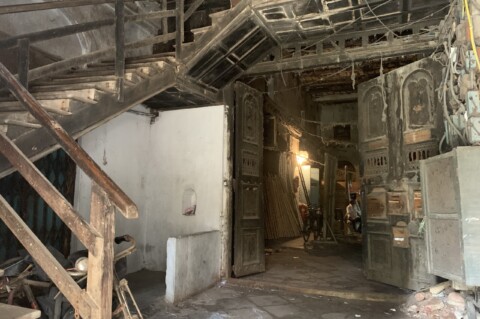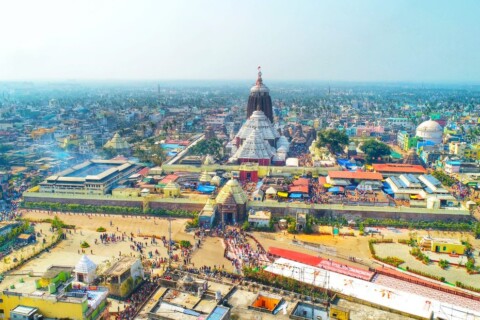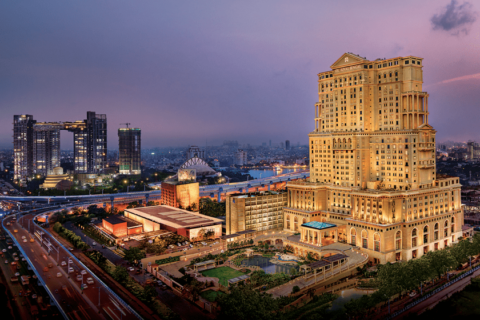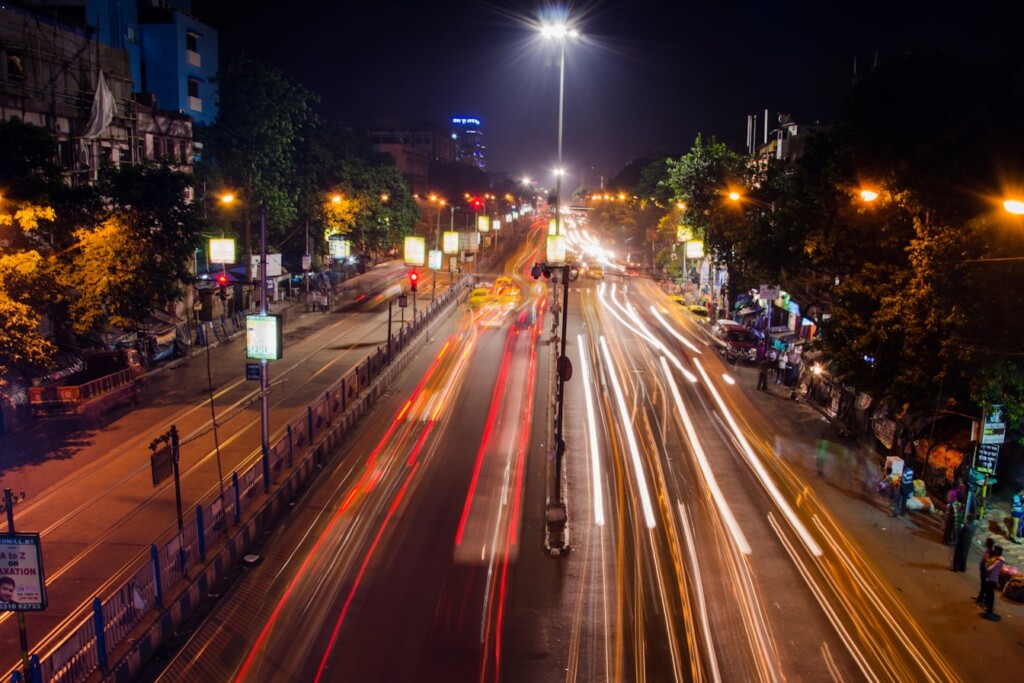Kolkata, often referred to as the City of Joy, is a vibrant metropolis that pulsates with life, history, and culture. As the capital of West Bengal, Kolkata holds a special place in the heart of India, embodying a unique blend of traditional values and modern dynamism. This article delves into why Kolkata is famous, highlighting its historical significance, cultural heritage, architectural marvels, and more.
Why Kolkata is Famous
Kolkata’s fame can be attributed to various factors, from its historical background to its rich cultural tapestry. The city’s allure lies in its ability to seamlessly integrate its colonial past with its present-day cultural vibrancy. Let’s explore the myriad reasons that make Kolkata a renowned city.
Historical Significance
Colonial Legacy
Kolkata, formerly known as Calcutta, served as the capital of British India from 1772 to 1911. This colonial heritage is evident in the city’s architecture, institutions, and urban planning. The British influence can be seen in the grand edifices and sprawling gardens that dot the cityscape, making Kolkata a living museum of the colonial era.
The British Era
The British era saw the construction of many iconic structures, including the Writers’ Building, Fort William, and the General Post Office. These buildings are not only architectural marvels but also repositories of history, narrating tales of a bygone era. The city’s streets, lined with colonial-style mansions, evoke the grandeur of the past, attracting history buffs and tourists alike.
Independence Movement
Kolkata played a pivotal role in India’s struggle for independence. It was the birthplace of several prominent freedom fighters, including Subhas Chandra Bose and Sri Aurobindo. The city was a hotbed of revolutionary activities, with movements such as the Bengal Renaissance and the Indian National Congress gaining momentum here. Kolkata’s historical significance is thus deeply intertwined with India’s journey to independence.
Cultural Heritage
Literature and Arts
Kolkata is often hailed as the cultural capital of India. The city has produced literary giants like Rabindranath Tagore, who won the Nobel Prize in Literature. Kolkata’s literary scene is vibrant, with numerous book fairs, literary festivals, and the iconic College Street, also known as Boi Para (Book Street), where book lovers can spend hours exploring.
Music and Dance
The city has a rich tradition of music and dance. From classical Indian music to contemporary genres, Kolkata has nurtured numerous artists. The Rabindra Sangeet, songs written and composed by Rabindranath Tagore, are an integral part of Bengali culture. Additionally, the city hosts several music festivals and cultural events that celebrate its musical heritage.
Festivals
Kolkata’s festive spirit is unmatched. The city comes alive during Durga Puja, its most significant festival, celebrated with grandeur and enthusiasm. The beautifully crafted idols, elaborate pandals (temporary structures), and cultural performances draw visitors from around the world. Other festivals like Diwali, Holi, and Christmas are also celebrated with great fervor, reflecting the city’s inclusive spirit.
Architectural Marvels
Victoria Memorial
One of Kolkata’s most iconic landmarks, the Victoria Memorial, is a stunning example of Indo-Saracenic architecture. Built in memory of Queen Victoria, this white marble monument houses a museum with an extensive collection of artifacts from the British era. The lush gardens surrounding the memorial provide a tranquil escape amidst the bustling city.
Howrah Bridge
A symbol of Kolkata, the Howrah Bridge, also known as Rabindra Setu, is an engineering marvel. Spanning the Hooghly River, this cantilever bridge is one of the busiest in the world. Its sheer size and design make it a must-visit for anyone exploring Kolkata.
Dakshineswar Kali Temple
Situated on the banks of the Hooghly River, the Dakshineswar Kali Temple is a major pilgrimage site. Built by Rani Rashmoni in the 19th century, this temple is dedicated to Goddess Kali and attracts thousands of devotees and tourists daily. Its striking architecture and spiritual ambiance make it a significant landmark in Kolkata.
Educational Hub
Prestigious Institutions
Kolkata is home to some of India’s oldest and most prestigious educational institutions, such as the University of Calcutta, established in 1857, and the Indian Statistical Institute. These institutions have produced numerous scholars, scientists, and leaders, contributing significantly to the country’s intellectual capital.
Intellectual Capital
The city has a rich intellectual tradition, often referred to as the “intellectual capital” of India. It has been the birthplace of many great thinkers, poets, and philosophers. The intellectual vibrancy of Kolkata is palpable in its numerous libraries, bookshops, and academic conferences.
Culinary Delights
Street Food
Kolkata’s street food is legendary. From puchkas (pani puri) to kathi rolls, the city’s streets are lined with stalls offering delicious and affordable snacks. The bustling food markets and the aroma of spices make Kolkata a food lover’s paradise.
Traditional Bengali Cuisine
Traditional Bengali cuisine is another highlight. Dishes like macher jhol (fish curry), shorshe ilish (hilsa fish in mustard sauce), and various sweets such as rasgulla and sandesh showcase the culinary prowess of the region. Kolkata’s food culture reflects its rich history and diverse influences.
Sports and Recreation
Cricket
Cricket is more than just a sport in Kolkata; it’s a passion. The iconic Eden Gardens, one of the largest cricket stadiums in the world, has witnessed many historic matches. The enthusiasm of Kolkata’s cricket fans is unparalleled, making it a hub for cricketing activities.
Football
Football also holds a special place in the hearts of Kolkatans. The city is home to some of India’s oldest football clubs, including Mohun Bagan and East Bengal. The Kolkata Derby, a match between these two teams, is a major event, drawing massive crowds and showcasing the city’s love for the sport.
Economic and Commercial Importance
Business Districts
Kolkata is a major economic center in Eastern India. The Central Business District, including areas like Dalhousie Square, houses numerous corporate offices, banks, and government buildings. The city’s commercial activities contribute significantly to the regional economy.
Port of Kolkata
The Port of Kolkata, one of the oldest in India, plays a crucial role in trade and commerce. Its strategic location on the Hooghly River facilitates maritime trade, making Kolkata a vital link in India’s economic network.
Entertainment and Media
Tollywood
Kolkata is the hub of the Bengali film industry, known as Tollywood. The city has produced many acclaimed films and filmmakers, contributing to the rich tapestry of Indian cinema. The thriving film industry is a testament to Kolkata’s creative spirit.
Theaters and Cultural Centers
The city boasts a vibrant theater scene, with numerous cultural centers like Nandan and Rabindra Sadan hosting plays, films, and cultural events. These venues are crucial in promoting and preserving the city’s artistic heritage.
Public Transportation
Trams
Kolkata is the only Indian city with a functioning tram network. The trams are an integral part of the city’s charm, offering a unique and nostalgic way to explore Kolkata. They connect various parts of the city, providing an eco-friendly mode of transport.
Metro System
The Kolkata Metro, the oldest metro system in India, is an efficient and popular mode of public transport. It connects key areas of the city, easing the traffic congestion and providing a fast, reliable way to commute.
Art and Museums
Indian Museum
The Indian Museum in Kolkata, founded in 1814, is the oldest and largest museum in India. It houses an extensive collection of artifacts, including ancient sculptures, coins, fossils, and more. The museum offers a fascinating glimpse into India’s rich history and cultural heritage.
Academy of Fine Arts
The Academy of Fine Arts is a premier cultural institution in Kolkata. It hosts regular exhibitions, showcasing works by both renowned and emerging artists. The academy plays a vital role in nurturing and promoting the visual arts in the city.
Green Spaces
Maidan
The Maidan, often referred to as the “lungs of Kolkata,” is a vast urban park in the heart of the city. It is a popular spot for picnics, sports, and leisurely strolls. The Maidan’s green expanse provides a refreshing escape from the city’s hustle and bustle.
Botanical Gardens
The Acharya Jagadish Chandra Bose Indian Botanic Garden, commonly known as the Botanical Gardens, is famous for its diverse collection of plants and the Great Banyan Tree, which is over 250 years old. The gardens offer a serene environment for nature lovers and botanists.
Shopping and Markets
New Market
New Market, also known as Hogg Market, is a historic shopping destination in Kolkata. It offers a wide range of goods, from clothing and accessories to spices and sweets. The bustling market atmosphere and the variety of products make it a must-visit for shoppers.
College Street
College Street is renowned for its numerous bookshops and publishers. It is a haven for book lovers, offering everything from academic texts to rare editions. The street’s intellectual vibe and the famous Coffee House make it a cultural landmark in Kolkata.
Religion and Spirituality
Belur Math
Belur Math, the headquarters of the Ramakrishna Mission, is a spiritual center that attracts devotees and tourists alike. The temple’s unique architecture, blending Hindu, Christian, and Islamic motifs, symbolizes unity and harmony.
St. Paul’s Cathedral
St. Paul’s Cathedral, an Anglican cathedral built in 1847, is a striking example of Gothic architecture. It is not only a place of worship but also a major tourist attraction, known for its beautiful stained glass windows and serene ambiance.
Conclusion
Kolkata, with its rich history, cultural diversity, and vibrant spirit, is a city that captivates all who visit. Its blend of the old and the new, the traditional and the modern, makes it a unique destination. From its architectural marvels and culinary delights to its educational institutions and bustling markets, Kolkata offers a glimpse into the soul of India. Whether you’re a history enthusiast, a foodie, a sports fan, or a culture lover, Kolkata has something for everyone, making it a city truly worthy of its fame.
What is Kolkata famous for?
Kolkata is famous for its rich history, cultural heritage, architectural landmarks, literary contributions, and vibrant festivals like Durga Puja.
Why is Kolkata called the City of Joy?
Kolkata is called the City of Joy because of its lively culture, friendly people, and the enthusiastic celebration of festivals, creating an atmosphere of joy and happiness.
What are the must-visit places in Kolkata?
Must-visit places in Kolkata include Victoria Memorial, Howrah Bridge, Dakshineswar Kali Temple, Indian Museum, and New Market.
What is the best time to visit Kolkata?
The best time to visit Kolkata is during the winter months, from October to March, when the weather is pleasant and the city hosts major festivals like Durga Puja.
How is the food in Kolkata?
The food in Kolkata is diverse and delicious, with famous street foods like puchkas and kathi rolls, as well as traditional Bengali dishes like macher jhol and sweets like rasgulla.
Is Kolkata a safe city for tourists?
Yes, Kolkata is generally considered a safe city for tourists. However, like any major city, it is advisable to take basic precautions and stay aware of your surroundings.









